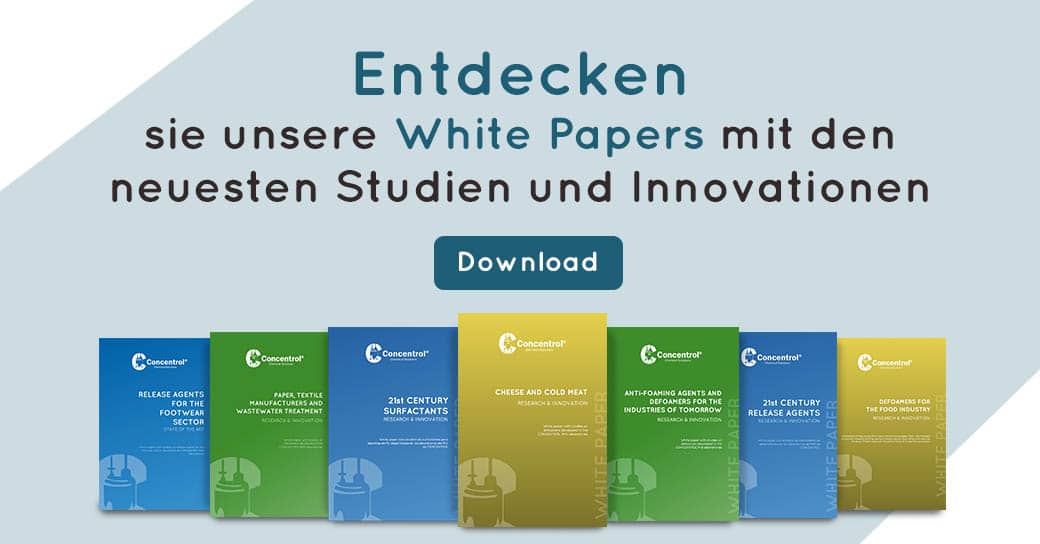From June 27th to 29th, Concentrol attended PSE Europe (International Polyurethane Solutions Exhibition) presenting a seminar titled “New silicon surfactants with low emissions HR foams” by Dr. Josep Nadal and Mr. Adrià López from the technical department.
The presentation was divided into three sections: a general introduction on flexible polyurethane foams, an experimental section with the results and conclusions. The aim of the study was to find efficient surfactants which in turn presented the minimum volatile emissions and to achieve good results in both stability and cellular regulation.
INTRODUTION
At the beginning of the lecture, Dr. Nadal made an introduction about flexible polyurethane foams and its evolutions throughout the history. Their origin is in the 1950s and suffered important changes in the 80s with growing demands to reduce the volatile emissions. In the 90s the commercialization of surfactants made with MDI formulations began. The most recent change was in 2000, when it became possible to analyze precisely the value of the volatile emissions thanks to the introduction of analysis methods based in thermal desorption.
Dr. Nadal also presented the experiments carried out in Concentrol’s labs, divided into two parts. The first was the synthesis and characterization of 24 new surfactants designed specifically for low emissions. This part presented the results of the maximum volatile emissions of each one of the surfactants from the analysis by gas chromatography (GC)*. The second part related to the preparation of TDI and MDI foams using the surfactants previously synthesized. On these foams physical analyzes have been performed and the results have been related to the theoretical emissions calculated by each of the surfactants.
The 24 new surfactants have been synthesized from the combination of 6 polyethers and 4 polysiloxanes. The analytics include turbidity point analysis to classify surfactants based on their polarity, molecular weight analysis (by GPC chromatography) and analysis of volatile components by gas chromatography (GC- FID).
These new surfactants have been tested in two different formulations, representative of those currently used in the manufacture of polyurethane foam for car seats. A TDI-type formulation and an MDI-type formulation.
TDI FORMULATION
The foams with free growth were developed with each of the 24 new surfactants, with the dosage of 1% (parts per 100 parts of polyol, pphp). A lower density of the foam, good general appearance and good cell regulation have been the qualitative parameters used to discriminate 12 of the 24 surfactants as the most appropriate.
Then, these 12 surfactants were tested at 0.5% pphp, 6 of those 12 surfactants even better results. It could be verified that the density with free growth had dropped significantly, decreasing from 51 Kg / m3 (foam without surfactant) and from 33 Kg / m3 (foam with benchmark surfactant CONCENTROL STB PU-1259 PF), to 31 kg / m3 on average and showing a better stability and general appearance of the foam. Among the 6 surfactants, the MX-11, MX-12 and MX-13 surfactants were highlighted with the best results.
MDI FORMULATION
Once the first selection in the TDI foams was made, in this case, only the 12 best surfactants were tested. The first tested dosage was 0.5% pphp. Coinciding with the previous results, 6 surfactants have been those that have produced the best foams in terms of lower densities, good appearance and good cellular regulation in general.
Regarding free growth density, the foams achieve values in the range of 44-47 Kg / m3, while the density value without surfactant is 50 Kg / m3 and the density value with the benchmark surfactant CONCENTROL STB PU-1259 PF is 48 Kg / m3.
After these tests, molded foams were prepared, with a density of 67 Kg / m3, to measure the values of breaking strength (FTC). A low FTC value is associated with an open cell structure foam and a high FTC value, to a more closed cell foam. Flexible foams with open cellular structures are desirable, so usually, a low FTC value with low dependency on the concentration of surfactant is the most suitable solution. All 6 surfactants show low FTC values, slightly lower than those obtained using the CONCENTROL STB PU-1259 PF benchmark surfactant, and therefore an open cell structure.
EMISSIONS OF VOLATILE COMPONENTS
Employing the gas chromatography technique by choosing the appropriate patterns, the present volatile components in each of the surfactants can be quantified. This technique is a useful, accurate and fast tool for the calculation of the maximum volatile emissions of any silicone surfactant and is an ideal complement in the use of direct thermal desorption methods such as the VDA-278.
Through the experiments, the new surfactants MX-01, MX-02 and MX-03 emit less volatile components than the standard surfactant (CONCENTROL STB PU-1259-PF). This standard surfactant has been previously evaluated and can be considered to be very low in emissions, so at least 3 of the new surfactants offer even better results in terms of volatile emissions.
CONCLUSIONS
The choice of a correct chemical composition and a proper molecular weight of the surfactant is the key to reducing the emissions of volatile components (VDA-278) so that almost any free emission foam can be achieved or related with the surfactant.
If you are interested in obtaining more information on the gas chromatography of the surfactants, contact us at Concentrol or via the e-mail: ydezabala[a]concentrol.com



